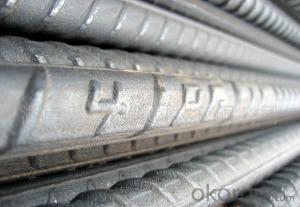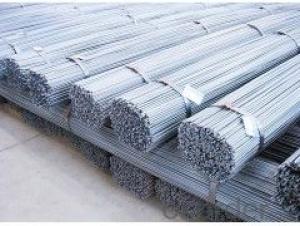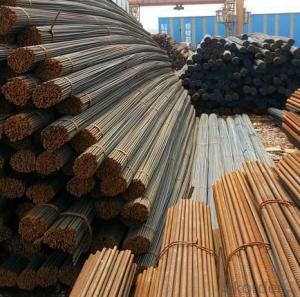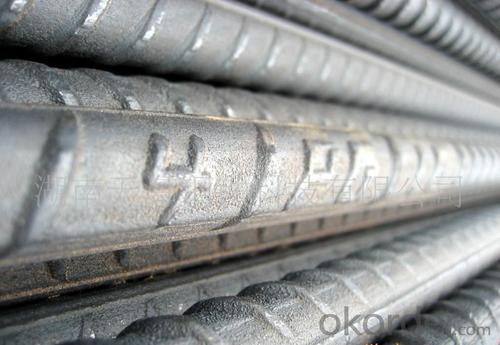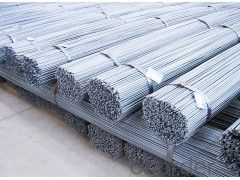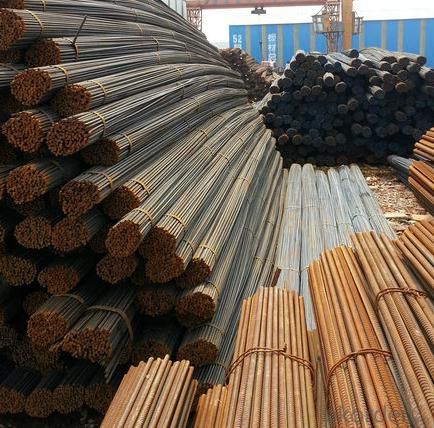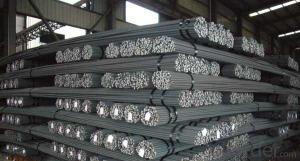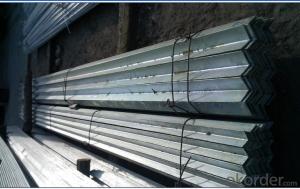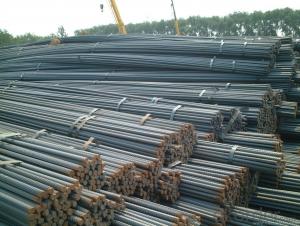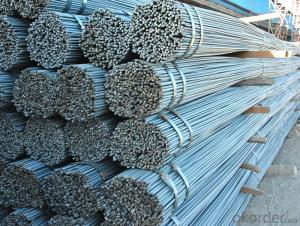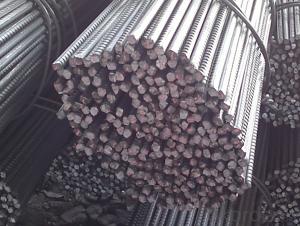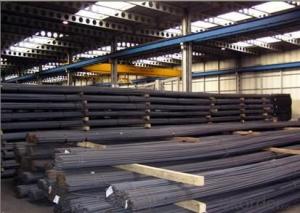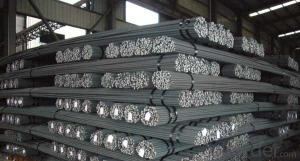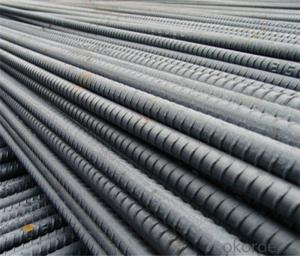A615 deformed steel bar for construction
- Loading Port:
- Tianjin
- Payment Terms:
- TT OR LC
- Min Order Qty:
- 25 m.t.
- Supply Capability:
- 10000 m.t./month
OKorder Service Pledge
OKorder Financial Service
You Might Also Like
Product Description:
Specifications of HRB500 Deformed Steel Bar:
Standard | GB | HRB500 |
Diameter | 6mm,8mm,10mm,12mm,14mm,16mm,18mm,20mm, 22mm,25mm,28mm,32mm,36mm,40mm,50mm | |
Length | 6M, 9M,12M or as required | |
Payment term | TT or L/C | |
Application | mainly used in construction industry to reinforce concrete structures and so on | |
Quality | First quality, the goods are from Chinese big manufacturers. | |
Type | Hot rolled deformed steel bar | |
Brand name | DRAGON | |
Chemical Composition: (Please kindly find our chemistry of our material based on HRB500 as below for your information)
Grade | Technical data of the original chemical composition (%) | ||||||
C | Mn | Si | S | P | V | ||
HRB500 | ≤0.25 | ≤1.60 | ≤0.80 | ≤0.045 | ≤0.045 | 0.08-0.12 | |
Physical capability | |||||||
Yield Strength (N/cm²) | Tensile Strength (N/cm²) | Elongation (%) | |||||
≥500 | ≥630 | ≥12 | |||||
Theoretical weight and section area of each diameter as below for your information:
Diameter(mm) | Section area (mm²) | Mass(kg/m) | Weight of 12m bar(kg) |
6 | 28.27 | 0.222 | 2.664 |
8 | 50.27 | 0.395 | 4.74 |
10 | 78.54 | 0.617 | 7.404 |
12 | 113.1 | 0.888 | 10.656 |
14 | 153.9 | 1.21 | 14.52 |
16 | 201.1 | 1.58 | 18.96 |
18 | 254.5 | 2.00 | 24 |
20 | 314.2 | 2.47 | 29.64 |
22 | 380.1 | 2.98 | 35.76 |
25 | 490.9 | 3.85 | 46.2 |
28 | 615.8 | 4.83 | 57.96 |
32 | 804.2 | 6.31 | 75.72 |
36 | 1018 | 7.99 | 98.88 |
40 | 1257 | 9.87 | 118.44 |
50 | 1964 | 15.42 | 185.04 |
Usage and Applications of HRB500 Deformed Steel Bar:
Deformed bar is widely used in buildings, bridges, roads and other engineering construction. Big to highways, railways, bridges, culverts, tunnels, public facilities such as flood control, dam, small to housing construction, beam, column, wall and the foundation of the plate, deformed bar is an integral structure material. With the development of world economy and the vigorous development of infrastructure construction, real estate, the demand for deformed bar will be larger and larger..
Packaging & Delivery of HRB500 Deformed Steel Bar:
Packaging Detail: products are packed in bundle and then shipped by container or bulk vessel, deformed bar is usually naked strapping delivery, when storing, please pay attention to moisture proof. The performance of rust will produce adverse effect.
Each bundle weight: 2-3MT, or as required
Delivery Detail: within 45 days after received advanced payment or LC.
Label: to be specified by customer, generally, each bundle has 1-2 labels
Trade terms: FOB, CFR, CIF
Deformed Steel Bar in stock
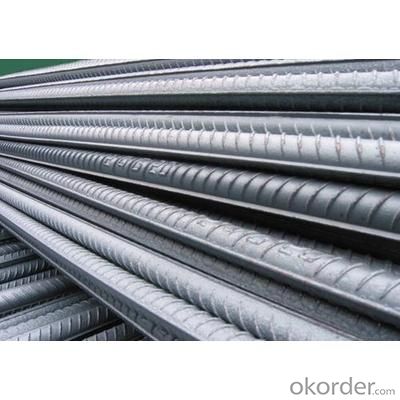
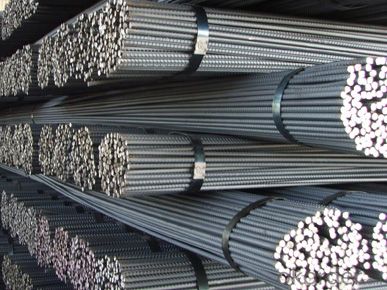
Deformed Steel Bar in testing
Note:
1. Our products are produced according to national standard (GB), if not, supply according to national standards (GB) or agreement as customer required.
2. Other Grade and Standard Deformed Steel Bar we can supply:
Grade: GR40/GR60, G460B/B500A/B500B/B500C,BST500S
Standard: ASTM, BS, DIN
The Minimum Order Quantity of these products is high, and need to be confirmed.
3. We can not only supply Deformed Steel Bar; if you need anything about building materials, please contact us for further information.
4. Please send us your detail specifications when inquire. We will reply to you as soon as possible. We sincerely hope we can establish a long stable business relationship.
- Q: What is the process of reinforcing concrete walls with steel rebars?
- The process of reinforcing concrete walls with steel rebars involves several steps. First, the design and placement of rebars are determined based on the structural requirements. Then, the concrete wall is prepared by cleaning and ensuring a strong bond with the rebars. Next, the rebars are cut and bent according to the specified dimensions and patterns. These rebars are then placed in the desired positions within the formwork, ensuring proper spacing and alignment. Once the rebars are in place, the concrete is poured, encapsulating the rebars and forming a solid structure. The concrete is allowed to cure and harden, creating a reinforced concrete wall that is stronger and more resistant to cracking or structural failure.
- Q: How do steel rebars affect the overall sound insulation of a building?
- Steel rebars have minimal impact on the overall sound insulation of a building. While they may conduct sound to a small extent due to their rigid nature, the primary factors affecting sound insulation are the materials used for walls, floors, and ceilings, as well as insulation materials. Steel rebars are typically embedded within concrete structures and do not significantly contribute to sound transmission between spaces.
- Q: What is the impact of steel rebars on the overall carbon footprint of a building?
- Steel rebars have a significant impact on the overall carbon footprint of a building. The production of steel involves high carbon emissions, contributing to greenhouse gas emissions and climate change. Additionally, the extraction of raw materials and the transportation of steel rebars further increase carbon emissions. However, steel rebars provide structural strength and durability, reducing the need for future repairs or replacements. Therefore, while the use of steel rebars does contribute to the carbon footprint, proper construction practices and efficient use of materials can help mitigate their environmental impact.
- Q: How do steel rebars resist fire?
- Steel rebars resist fire due to their high melting point and low thermal conductivity. Steel has a melting point of around 1370°C, which is higher than typical temperatures reached in building fires. This allows rebars to maintain their structural integrity even in high-temperature environments. Additionally, steel has a low thermal conductivity, meaning it does not readily transfer heat, minimizing the risk of fire spread and structural failure. The combination of these properties makes steel rebars a reliable choice for reinforcing concrete structures in fire-prone areas.
- Q: What are the different types of corrosion protection for steel rebars?
- There are several types of corrosion protection methods for steel rebars, including epoxy coatings, galvanization, concrete cover, and cathodic protection.
- Q: How do steel rebars affect the maintenance requirements of a structure?
- Steel rebars can significantly impact the maintenance requirements of a structure by enhancing its structural integrity and durability. The use of steel rebars in concrete structures helps prevent cracking, improve load-bearing capacity, and enhance resistance against external forces such as earthquakes and weathering. As a result, the maintenance requirements of the structure are reduced as it becomes more resilient to wear and tear, reducing the need for frequent repairs or replacements.
- Q: How do steel rebars affect the overall constructability of concrete structures?
- Concrete structures are greatly influenced by steel rebars, which are also known as reinforcing bars. These rebars are embedded in the concrete to enhance its strength and structural integrity, as well as resist tensile forces. The impact of rebars on constructability is significant, primarily by increasing the load-bearing capacity of concrete structures. By reinforcing the concrete, rebars help distribute loads evenly, reducing the risk of structural failure. This enables the construction of taller, larger, and more complex concrete structures that can safely support heavier loads. Furthermore, rebars improve the durability and longevity of concrete structures. Concrete is strong in compression but weak in tension, making it prone to cracking under tensile stress. Steel rebars counter this weakness by absorbing and distributing tensile forces, preventing cracks and enhancing the overall durability of the structure. From a constructability perspective, rebars simplify the construction process by enabling efficient and precise concrete placement. Rebar cages are assembled before pouring concrete, acting as frameworks that provide support and reinforcement. This streamlines construction, reducing the likelihood of errors and rework. In addition, rebars enhance the constructability of concrete structures by allowing flexibility in design. Engineers can strategically position and shape rebars to create complex structural elements with specific load-bearing capabilities, such as beams, columns, and slabs. This promotes architectural creativity while ensuring structural integrity. However, it is crucial to note that incorrect placement or insufficient amount of rebars can have detrimental effects on constructability and overall performance. Inadequate reinforcement can lead to structural weaknesses, increased vulnerability to seismic activity, and reduced resistance to environmental factors like corrosion. Therefore, proper design and installation of rebars, following structural engineering standards and codes, are essential to ensure optimal constructability and long-term functionality of concrete structures.
- Q: Are rebar bars = rebar?
- Generally speaking (not absolute circle) steel is usually made of plate steel as the main form of packing, while threads are usually packed in straight strips.Turn left and turn right |
- Q: How do steel rebars affect the shrinkage and creep behavior of concrete?
- The shrinkage and creep behavior of concrete are significantly impacted by steel rebars. Shrinkage occurs when concrete contracts as it dries and hardens, while creep refers to the long-term deformation of concrete under sustained load. The presence of steel rebars in concrete has two main effects on its overall shrinkage. Firstly, the rebars provide resistance against shrinkage by countering the tensile forces that arise during drying. This resistance limits the volume change of the concrete, minimizing shrinkage. Secondly, the rebars act as a barrier to moisture movement, thus restricting the drying and shrinkage of the concrete. Nevertheless, the addition of steel rebars can also influence the creep behavior of the concrete. Creep is influenced by the material's modulus of elasticity and strength, both of which can be altered by the presence of steel rebars. The high modulus of elasticity and strength of the rebars can lead to higher levels of creep in the concrete, as there can be differential deformation between the concrete and the steel. Furthermore, the bond between the rebars and the concrete also affects the creep behavior. The strength of this bond influences the transfer of stress from the concrete to the rebars, thereby impacting the overall creep behavior of the composite material. In conclusion, steel rebars can reduce concrete shrinkage by providing resistance against drying and limiting moisture movement. However, they can also influence the creep behavior of the concrete due to factors such as modulus of elasticity, strength, and bond strength between the rebars and the concrete. Understanding the interaction between steel rebars and concrete is essential for designing structures that can withstand shrinkage and creep effects.
- Q: How are steel rebars used in retaining walls?
- Steel rebars are used in retaining walls to provide reinforcement and strength to the concrete structure. These rebars are strategically placed within the wall to resist the lateral pressure exerted by the soil behind it. This reinforcement helps prevent the wall from cracking or collapsing under the load, ensuring its stability and longevity.
Send your message to us
A615 deformed steel bar for construction
- Loading Port:
- Tianjin
- Payment Terms:
- TT OR LC
- Min Order Qty:
- 25 m.t.
- Supply Capability:
- 10000 m.t./month
OKorder Service Pledge
OKorder Financial Service
Similar products
Hot products
Hot Searches
Related keywords
